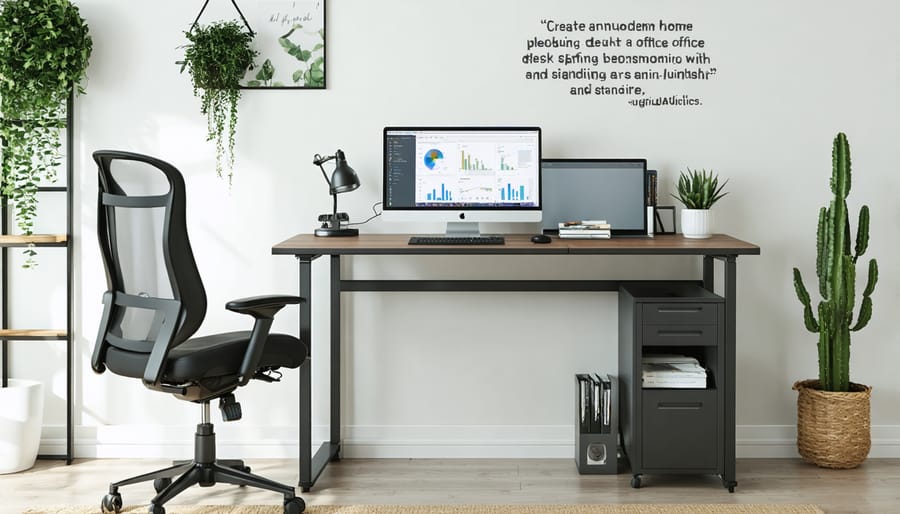Clean or replace air filters monthly to maintain proper airflow and keep you cool all summer. Schedule annual professional tune-ups to identify potential issues early and optimize system performance. Trim foliage at least 2 feet away from outdoor units to prevent obstructions and ensure adequate ventilation.
Change Air Filters Regularly

How to Change Your AC Filter
Changing your AC filter is a simple but essential task. First, locate the filter, usually in a return air grille or a slot in the air handler. Next, remove the old filter by sliding it out of the slot or opening the grille cover. Check the size printed on the filter’s frame and purchase a replacement that matches. Insert the new filter, ensuring the airflow arrow points toward the unit. Replace your filter every 1-3 months, depending on usage and environmental factors. A clean filter improves air quality, increases efficiency, and prolongs your AC’s lifespan. If you have a reusable filter, clean it according to the manufacturer’s instructions. By changing your filter regularly, you’ll enjoy cleaner air and a more reliable air conditioning system. Remember, this simple maintenance task can save you money on energy bills and prevent costly repairs down the line.
Keep the Area Around Your AC Unit Clear
Maintaining proper clearance around your outdoor AC unit is crucial for its performance and longevity. Aim to keep a minimum of 2-3 feet of space on all sides of the unit, and 5 feet of clearance above it. This allows for adequate airflow and heat dissipation, which are essential for the system to operate efficiently. Remove any debris, such as leaves, twigs, or grass clippings, that may accumulate near the unit, as these can obstruct airflow and cause the system to work harder than necessary. Additionally, trim back any shrubs, plants, or trees that may encroach on the unit’s space. By maintaining a clear area around your AC unit, you’ll help ensure it runs smoothly, consumes less energy, and lasts longer, ultimately saving you money on utility bills and potential repairs.

Clean the Condenser Coils
When to Call a Professional
While many air conditioner maintenance tasks are DIY-friendly, some situations require the expertise of a professional HVAC technician. If you notice a significant decline in cooling performance, strange noises, or musty odors coming from your AC unit, it’s best to call in a pro. Additionally, if you suspect a refrigerant leak or electrical issues, attempting repairs yourself can be dangerous. Annual tune-ups by a certified technician are also recommended to keep your system running at peak efficiency and catch potential problems early. When in doubt, trust your instincts and seek professional help to ensure the safety and longevity of your air conditioner.
Check and Clean the Condensate Drain Line
Maintaining a clear condensate drain line is crucial for preventing water damage and mold growth in your home. As your air conditioner runs, it removes moisture from the air, which collects in the condensate pan and drains through the line. If this line becomes clogged with algae, mold, or debris, water can back up and overflow, causing damage to your walls, floors, and furniture. To keep your condensate line flowing freely, pour a mixture of equal parts water and white vinegar into the drain line every few months. For tougher clogs, use a shop vacuum or plumber’s snake to remove the blockage. If you’re unsure about tackling this task yourself, consider scheduling professional maintenance to ensure your system remains in top condition. By regularly checking and cleaning your condensate drain line, you can protect your home from costly water damage and maintain a healthy living environment.
Schedule Annual Professional Maintenance
What to Expect During a Professional AC Tune-Up
When an HVAC professional performs an annual AC tune-up, they will typically start by inspecting the thermostat, calibrating it if necessary to ensure accurate temperature control. Next, they’ll clean or replace the air filters to maintain proper airflow and improve indoor air quality. The technician will then thoroughly clean the evaporator and condenser coils, removing any dirt, dust, or debris that can hinder heat transfer and reduce efficiency.
Moving on to the electrical components, they’ll check and tighten any loose connections, measure voltage and current, and inspect the capacitors and contactors for signs of wear. The condensate drain line will be cleared of any clogs to prevent water damage and maintain proper drainage. Lastly, the technician will lubricate all moving parts, such as the motor and fan bearings, to reduce friction and prevent premature wear.
Throughout the tune-up, the HVAC professional will also monitor the system’s refrigerant levels, checking for leaks and recharging the system if needed. They’ll test the AC’s overall performance, making any necessary adjustments to ensure optimal cooling and energy efficiency. By the end of the tune-up, your air conditioner will be ready to provide reliable, cost-effective cooling all summer long.
Conclusion
Regular air conditioner maintenance is essential for ensuring a comfortable, efficient home. By implementing these simple tips, you can extend the life of your AC unit, improve its performance, and save money on energy bills. From changing the air filter and cleaning the coils to scheduling professional tune-ups, each step plays a crucial role in keeping your air conditioner running smoothly. Don’t wait until a breakdown occurs to give your AC the attention it deserves. Make these maintenance tasks a part of your regular home upkeep routine and enjoy the benefits of a well-maintained, reliable air conditioning system year-round.





